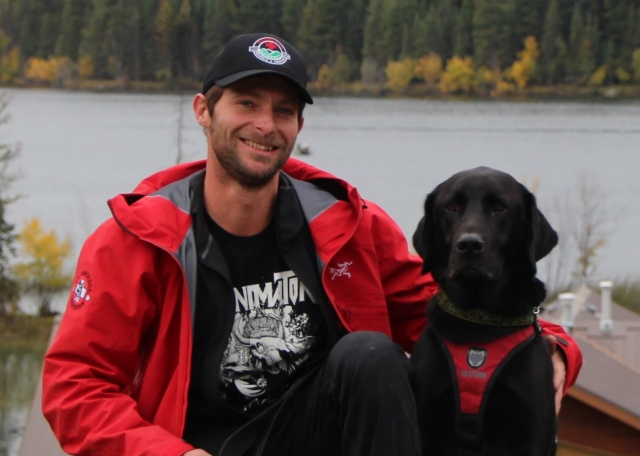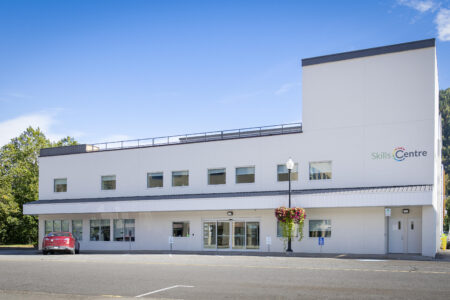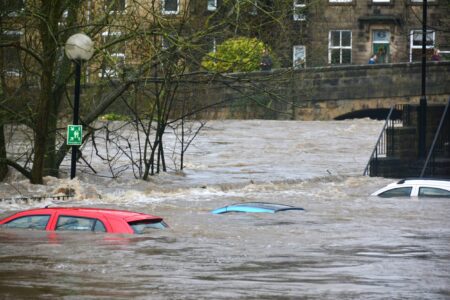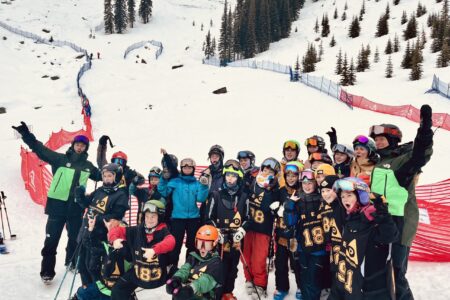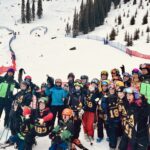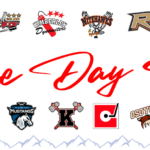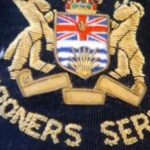Meet Jungle, the Search Dog
Meet Jungle, the black lab. He’s a validated Avalanche and Wilderness Search Dog and a volunteer member of the Rossland Search and Rescue (SAR) group. He and his principal friend and handler, Andy Lewis, are ready and willing to devote their time and energy as a team to find missing people — even if those people have been buried in an avalanche.
Andy has had Jungle for four years now, since Jungle was seven weeks old. He has been training Jungle for SAR from about the age of 18 months; he notes wryly that it takes about 18 months for a dog’s body to mature, and about four years for the brain to catch up.
Andy comments, “dog handlers usually get the breeds that are suited to them” — he says many search dog handlers have German shepherds and Belgian shepherds which tend to be fairly serious breeds, while Jungle is typical of the black lab — more friendly and playful.
About the Canadian Avalanche Rescue Dog Association (CARDA) training, Andy says that the initial two-year training requirement “seems like a long commitment at first, but it just flies by, and when you begin to go out and respond to calls, you realize that two years is not very long at all. There is so much to learn about the relationship between you and the dog, and the dynamics with respect to rescuing people. It takes two years to really get a handle on your dog, to get to where you can cope with a stressful situation. In the first two years as a dog handler, you learn a lot about yourself.”
Training is ongoing. Besides their individual everyday training, Andy and Jungle took part in SAREX 2016 this past summer, a massive training session at Slocan Park with many other SAR groups. Then, in early October, they travelled to Kamloops to take part in the British Columbia Search Dog Association fall training session.
Andy commented favourably on the recent push to have people educated about avalanche and other backcountry risks and how to be prepared for them before heading off to play on steep slopes and out in the backcountry. His advice: “Take a course!” He noted that people often ski in places they consider safe, and still get surprised by avalanches. “People get too comfortable,” he said, and sometimes don’t pay enough attention to changing conditions — or think that for some reason they, personally, are exempt from risks.
A ski patroller at Red, Andy commented that a few people venture onto the ski hill’s in-bounds area before opening, or after closing. That’s a time when avalanche control may be under way, which can be dangerous for someone in the wrong place, or when employees may be in the area with sleds and not expecting to see skiers. He strongly advises people not to go on the hill when it’s closed — to respect the needs of the hill’s operations, and the hazards associated with going there when the hill is closed and employees may be out working, but there’s no ski patrol.
Andy commented that he thinks it’s a good thing to have a qualified search dog on the mountain at the ski hill, because “we might be in the right place at the right time, and be able to save someone.” He does stress that “the job comes before the dog. I can’t let him interfere in any way with my duties as a patroller.” Andy manages to fit in training exercises for Jungle during off time up on the mountain, by burying “pieces of clothing from the Thrift Store that I’ve scented, or that some other smelly ski patroller has scented” and then challenging Jungle to find it. And he does.
Asked how his employer treats his volunteer Search and Rescue role, Andy said that he has a verbal agreement with his boss, that if he’s called for a search, he can just go; if a search would take him outside Red’s tenure area, he would need to sign out before leaving. He emphasized how deeply he appreciates the support he’s had from Red and from his fellow patrollers and from many others in the community for his Search and Rescue activities.
Andy also mentioned that Red Mountain’s donation of some space on the mountain for Avalanche Awareness Days during January is greatly appreciated by Search and Rescue. He points out that Search and Rescue is a collaborative effort, with volunteers and the RCMP and, sometimes, Red Mountain working together to find someone, and to save a life. “The better we can all work together, the more effective we can be,” he added.
The SAR groups in different communities also work together: Rossland, Castlegar, Grand Forks and South Columbia groups will all help each other with searches when additional searchers are needed.
People misplace themselves or get injured and incapacitated in various places, and in various seasons, not just on (or from) the ski hill. There have been searches based out of Strawberry Pass, and not too long ago a hiker broke her ankle on the Record Ridge trail. Search and Rescue came with their one-fat-wheeled gurney and transported her down the trail, first to a Search and Rescue vehicle, then to an ambulance at the Cascade Summit. The injured person benefited from having as one of her hiking companions a highly capable Rossland SAR volunteer with first aid expertise and a well-stocked day-pack.
Rossland is a community with many people who enjoy doing things outdoors and out in the mountains. We hike, bike, ski, snowboard, and snowshoe. And sometimes we get hurt. Andy reviewed the “ten essentials” that everyone who goes out should have along in a daypack. He listed them, and here’s the list for your greater safety and comfort in the event of unexpected setbacks:
1. Map & compass (use GPS only as a back-up);
2. Matches in a waterproof container (and some fire-starter);
3. Signalling device such as a whistle or other noise-maker;
4. Extra clothing;
5. Pocket knife;
6. Shelter (such as one or two space blankets, or an emergency bivvy-sack);
7. Water & extra food;
8. First-aid kit;
9. Light (headlamp);
10. Emergency locator beacon that uses GPS; you may not have cell-phone coverage.
Having these items in your daypack will help you avoid becoming misplaced, and if you’re injured, will help a Search and Rescue team reach you more quickly, and will help you survive until they can get there. It may take a while, and it will feel like much longer.
Even those who never venture out beyond their residential areas can appreciate Search and Rescue groups and their volunteers, especially dogs like Jungle who can follow their noses to find a missing person; some searches occur in an urban environment, for example, if a residential-care patient with dementia wanders off, or if a young child wanders off and becomes too frightened to make any noise. These are relatively rare events, but they do happen, and then a life is at stake.
When asked why people are willing to devote the time and training necessary to be SAR volunteers, Andy explained, “It’s really rewarding, to be able to help someone when they need it. It’s like paying it forward.”


